
Best 4 Shopify SMS Marketing Apps For Your Post-Purchase Strategy
Shopify SMS marketing done right! See how to integrate your SMS marketing apps for Shopify to build a successful post-purchase strategy.
Boost customer experience and reduce support tickets
Realtime order and shipment tracking
Proactive order and shipping notifications
Predictive pre-purchase estimated delivery dates
Self-Serivce branded order tracking
Effortless experience delivered
Make returns profitable and delight customers
Flexibility to define any return destinations & conditions
Simplify returns for your customers and team
Incentivize exchanges over returns
Returns management made easy for your team
Understand why your customers are returning
Unify the online and the in-store experience
Hassle-free pickup experience for customers
In-Store Dashboard to keep operations streamlined
In-Store and Online orders unified
Drive foot-traffic to your stores
Boost customer experience and reduce support tickets
Realtime order and shipment tracking
Proactive order and shipping notifications
Predictive pre-purchase estimated delivery dates
Self-Serivce branded order tracking
Effortless experience delivered
Make returns profitable and delight customers
Flexibility to define any return destinations & conditions
Simplify returns for your customers and team
Incentivize exchanges over returns
Returns management made easy for your team
Understand why your customers are returning
Unify the online and the in-store experience
Hassle-free pickup experience for customers
In-Store Dashboard to keep operations streamlined
In-Store and Online orders unified
Drive foot-traffic to your stores
Find the answer to all your questions
Explore the most comon questions about WeSupply
Calculate the ROI that WeSupply can bring you
Request a no strings attached review of your current shopping experience and missed conversion opportunities
Take a step by step trip through our functionality to see how we can improve your ecommerce processes.
Read actionable articles on how to optimize your post-purchase experience and decrease support tickets
Get inspired by stories of how our customers implemented an effortless post-purchase experience
A Deep Dive into Top Companies' Order Tracking & Returns Strategy
Wondering if WeSupply is a good fit for you? Read through our use cases to see how we can help you increase conversion & improve CX!
What is churn rate, how does it affects retail businesses, and how can you reduce it with effective post-purchase strategies? Find out here!

Churn rate is one of the most important (non-vanity) metrics for retailers and eCommerce businesses. It’s a measure of how many customers are leaving your business each month, and it can have a big impact on your bottom line.
The churn rate is an essential metric to monitor for long-term success, but it can be tough to track and understand. Besides, most businesses don’t have a good understanding of how their post-purchase operations affect churn rate.
First and foremost, learn how your post-purchase operations affect the churn rate, and what are the steps you can take to reduce the number of customers who leave your business each month.
The churn rate is a metric used to measure the percentage of customers who stop doing business with a company during a given period of time. In the retail and eCommerce industries, the churn rate is typically calculated on a monthly or quarterly basis.
A high churn rate can be indicative of a number of areas that need improvement, including poor customer service, inefficient customer communication, or even a lack of innovative products. Besides, 61% of customers would turn to a competitor after just one bad experience.
While it is impossible to completely eliminate churn, there are a number of strategies that businesses can use to reduce it.
These include offering discounts and loyalty programs, improving customer service, and regularly releasing new products. Most importantly, think that the sale is simply the beginning and invest in a premium post-purchase experience for your customers that pays off.
By understanding and managing their churn rate, retailers and eCommerce businesses can ensure that their customer base continues to grow.
There’s no single answer to the question of why customers churn.
However, there are some common reasons why people might choose to stop doing business with a particular brand or product.
Most often, they’re not satisfied with the quality of the service or the product. Sometimes, they feel that they’re not getting value for their money. And some other times, they simply found a better option elsewhere.
To better understand why this happens, here are the 5 most common reasons for an increased customer churn rate:
It comes as no surprise that poor customer experience directly impacts the churn rate for your business. Put yourself in your customers’ shoes. Wouldn’t you switch brands if the customer experience was lacking? That’s why focusing on the post-purchase experience will make you stand out and retain as many customers as possible.
Sometimes the customer experience can be quite exceptional, and you might have all other aspects in check, but the products themselves may be lacking in terms of quality. In situations like this, it’s essential to collect as much feedback as possible to determine exactly what’s missing and then try to switch manufacturers and suppliers, depending on the circumstances.
Although returns are not favorable for businesses, not being clear about your return policy can be a true deal-breaker. For instance, if a first-time buyer wants to exchange a shirt that’s simply a size too big and they can’t find a return policy or return center, they will probably stop buying from your store.
Setting lower prices might give you a competitive advantage, but it might also negatively affect your profit margins and bottom line. You need to carefully evaluate the costs of production, distribution, marketing, and everything that goes into the sales process, but also consider the value you’re bringing to the table.
Speaking of which, customers surprisingly often care more about the value you’re providing than the product itself. Your selling point might be sustainability or your dedication to giving back to the broader community, but you actually have to deliver— actions speak louder than words. It’s also a matter of the benefits you’re offering and how these can make an impact in their lives.
To put it simply, a high churn rate means that a lot of your customers are leaving. On the other hand, a low churn rate indicates that customers are happy and engaged with the company.
But how can you calculate the churn rate?
Let’s start with the basics and take a look at the following formula:
(Number of customers lost during a certain period) / (Total number of customers at the beginning of the same period) X 100 = Churn rate (in %)
Note that you can monitor the monthly churn rate and the annual churn rate, and even quarterly rates.
In the case of subscription-based services or physical products, you can easily calculate churn rates. Assuming you have 100 customers subscribed to your services or product delivery at the beginning of the month and 10 of them cancel their subscription by the end of that month, then the company’s churn rate would be 10%. There’s no doubt about that.
However, things aren’t always as simple as they might seem.
For retail and eCommerce, you also need to consider a churn window. After all, how do you know exactly when a customer stops buying altogether from your brand?
Look closely at your customer base and their behavior, analyze churn and repeat purchase rates, and then establish a churn window. If your customers don’t return before the churn window ends, then you can consider them churned customers.
On the other hand, you might discover that some of those customers come back shortly after the churn window has already ended. In those situations, you can either treat them as new customers or revisit your churn window and adjust the numbers. This is why you might also want to look at your net and gross revenue churn rate.
It’s challenging to settle on a good churn rate, considering the fact that it normally varies from industry to industry. For consumer goods, the average is 9.62% whereas the Software as a Service industry has an average churn rate of 4.79%, as seen below:
A “good” churn rate is normally one that keeps going down. In the end, what matters the most is to have higher customer retention and acquisition rates than your customer turnover and churn rates— that’s one way to know you’re on the right track.
Although the churn rate is a great metric to keep an eye on for most businesses, eCommerce brands and retailers should also measure their repeat purchase rate.
This metric refers to the percentage of customers that have shopped more than once from one company.
To calculate the repeat purchase rate, simply divide the number of customers who have purchased more than once by the total number of customers, and multiply by 100 to get a percentage. Just like when you’re calculating churn rate, you can choose a certain time period to measure results.
Here’s an example: If you have 100 customers and 50 bought from you more than once, your repeat purchase rate would be 50%.
The repeat purchase rate enables you to measure customer loyalty and predict retention and shows long-term performance trends that you can use to assess current business needs and discuss scalability matters with your shareholders and stakeholders or any decision-makers within your company.
Did you know that 58% of US consumers will switch companies because of poor customer service? That’s quite a percentage if you ask us!
Truth is that the customer experience is a key element for businesses in the consumer goods industry. It’s important to keep shoppers satisfied from the moment they first land on your site or enter your physical stores to the instant they hit the checkout button and make a purchase— and then throughout the entire post-purchase journey.
In fact, merchants (just like yourself) should be just as focused on the post-purchase experience as they are on the actual purchase experience.
For starters, post-purchase anxiety and dissonance can truly mess with the overall customer experience, leaving you in a tight spot. If customers don’t know the estimated delivery date, have no means to track their packages, and won’t receive any delivery notifications, they’re probably not going to have a pleasant time with your brand.
What if you’re shipping heavy items separately and your customers are wondering why only a half of the order arrived? What if you’re experiencing shipping delays and your customers are left in the dark not knowing when the package is going to arrive. This might happen once or twice, even to the best of us, but what if it happens over and over again?
No wonder, you’ll be dealing with high customer turnover rates. Fortunately, with the right tools and systems in place, you’ll be able to overcome these obstacles and work towards creating the premium experience your customers deserve.
The biggest challenge for businesses in the consumer goods industry is fighting for the attention of customers who are bombarded with marketing messages from all directions.
To combat this, most eCommerce businesses focus on creating a personalized shopping experience that caters to the individual needs of each customer.
Although this will surely help with customer acquisition and conversions, it’s not enough to turn one-time buyers into loyal customers and brand promoters. One aspect brands are missing out on is the post-purchase experience.
Here are some of our favorite tips to decrease turnover rate and drive customer satisfaction:
Nobody’s got time to waste emailing back and forth with your customer support team.
Although it seems counterproductive to encourage returns, there’s more than meets the eye. Imagine a customer looks at one of your products and contemplates whether or not to make a purchase. If you’re telling them that they can always make an exchange or return, you’re, in fact, encouraging them to proceed with the purchase.
Besides, customers who are looking for ways to return or exchange a product want the process to be as frictionless as possible. In fact, 89% of US consumers expect companies to have an online self-service support portal. Moreover, 79% of US consumers say they have already used a self-service portal for customer service.
There’s nothing worse than not knowing the status and whereabouts of your online purchase.
You keep waiting for an update, refreshing your tracking page obsessively until finally, you give up and reach out to customer service. If that’s the case, it’ll already be too late to create a premium post-purchase experience— the damage has been done.
This is where delivery notifications come in. By keeping customers updated on the status of their purchases, you can avoid high churn rates while creating a seamless post-purchase experience. Not to mention, it’ll save you a lot of time and headaches down the road, like hours spent replying to “Where Is My Order?” (WISMO) emails.
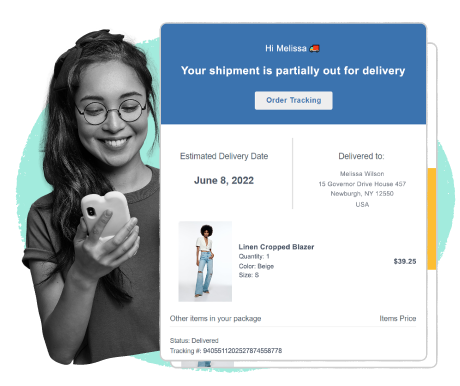

Personalization is the key to your customers’ hearts. ❤️
As a matter of fact, 59% of consumers who have experienced personalization believe it has an influence on purchase decisions, whereas 36% of shoppers want better personalization (although they might be hesitant to share personal data).
Fortunately, you can even add personalized deals based on purchase behavior directly on the order tracking page to keep the shopping experience rolling. Through our integrations with apps such as Justuno, Omnisend, and Privy, you can make the most of powerful segmentation and personalization with targeted offers, pop-ups, and much more!
Retailers and eCommerce businesses need to focus on creating loyalty programs that encourage customers to keep coming back. By offering rewards for repeat business, retail businesses can create a sense of brand loyalty that helps to mitigate customer churn rates.
You can’t do better if you don’t even know what’s wrong.
First things first, you need to collect customer feedback regarding your order fulfillment, returns management processes, and physical stores (if that’s the case). You can measure the NPS (Net Promoter Score) and the CSAT (Customer Satisfaction) score to see exactly what’s working and the areas that might need some improvements.
However, just gathering feedback and reviews is not enough. You also need to take action towards the desired outcome, for instance, to retain customers and increase the repeat purchase rate.
In fact, something as basic as offering a branded order tracking page and delivery notifications can do wonders. See how much of a difference can feedback make when carefully taken into consideration:
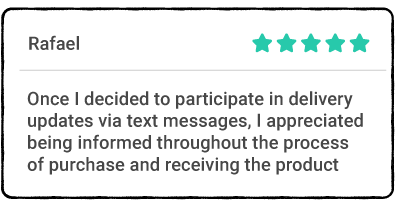
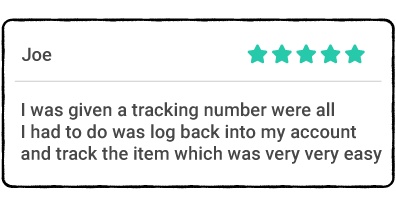
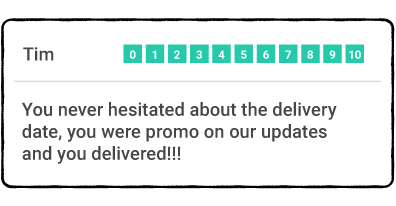
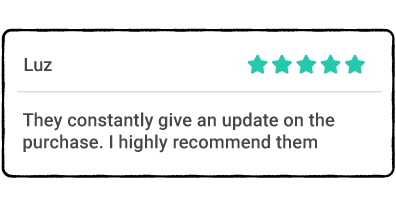

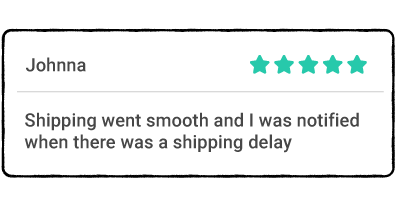
What if your customers find it difficult to have orders delivered at home? What if they would rather return items in store? These factors can easily influence their decision to make business with you (or stop doing so).
Consider providing them with multiple options like buying online and picking up in-store or at curbside. Not only will this provide your customers the flexibility they need, but it’ll also drive more foot traffic to your physical locations.
Additionally, you can enable them to initiate returns online and bring the products to your brick-and-mortar shop themselves, eliminating some of the anxiety that comes with returns and refunds!

To sum this article up, it’s clear that your churn rate has a lot to do with your post-purchase strategy. No doubt, there are other aspects that influence the churn rate, but customer experience is surely one of the most impactful elements.
To reduce customer turnover and keep more of your shoppers around for longer, the first step is to assess your current post-purchase operations and establish priorities.
Is a self-service returns center what your business has been lacking? Should you focus on creating a branded tracking page that also comes with intelligent product recommendations?
Look at the issue of churn from multiple perspectives if you want to be able to mitigate the negative impact of a poor post-purchase experience on your business.
Most importantly, show your customer that you care about them and their happiness long after they’ve made a purchase from you— and we’re here to help!
See how WeSupply can help! Watch our platform in action to convince yourself.
Learn How To Create Successful Post Purchase Email Campaigns
Build post-purchase email flows to drive customer satisfaction and revenue growth!

Shopify SMS marketing done right! See how to integrate your SMS marketing apps for Shopify to build a successful post-purchase strategy.
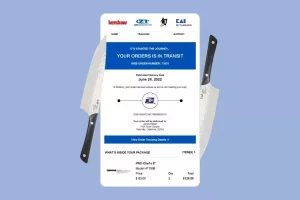
Keep reading to find out how Kai USA managed to remove 92% of order-related support inquiries using WeSupply as their post-purchase platform.
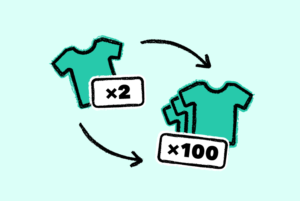
What is the Minimum Order Quantity or MOQ? Meaning and everything you need to keep in mind before sealing the deal with a supplier.

What does backordered mean and how does this affect your retail business? Check out this article to find out!
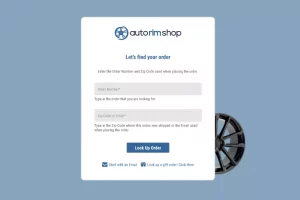
Auto Rim Shop automates the Delivery and Return Experience for heavy items fulfilled and returned directly to dropshippers.

Keep reading this article to find out how delivery companies track packages & how it affects your eCommerce business.

What is a packing slip and why should you use it for your business? Read this article to find out and get your free packing slip template.

How to build an excellent post-purchase experience using personalization tools? Check out this article to find out!

What does in transit mean and how long does it take? Read this article to find out & see how to answer your customers’ burning questions.